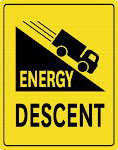It's been a year and a half since we started the garden. We began with a cleared block and one beautiful 30 year old oak tree. The soil we inherited was highly disturbed and compacted clay. Since we started we have brought in about 18 cubic metres of mulch, weekly collected green scraps from a local cafe, regularly gleaned brown biomass from the neighbourhood, occasionally bagged horse shit from the nearby horse farm, paid for mushroom compost, and free-ranged about 12 chickens. They're outside the window as I write. They bring us so much pleasure.
Here's what the garden looked like in November, 2007. The first thing I did was build a garden shed out of reclaimed materials and a dry stone wall to deal with the cut that our neighbours had created for their house site.

Over Summer this year we got up to about 25% self-sufficiency, while our indigenous grasses, banksias, wattles and sedges took root and began to grow. We failed dismally with both our sunflower and potato crops due to the lack of soil quality, but our leeks, corn, lettuce, garlic, tomatoes, broccoli, broad beans, snap peas, cucumber, onions, pumpkin, spinach, carrots, basil, strawberries, chillies, herbs and rhubarb were incredibly generous in what they provided for us.
So, this winter it's soil improvement time again. More raised beds are about to be built and I've just gleaned more top soil from local council works up the road, brought down by a friendly worker in his truck.
Here's what the garden looks like today.

With permaculture one mimics natural ecologies to grow food in healthy environments. In other words one establishes a significant connection between indigenous and exotic plants, microbes, insects, birds and animals. This constitutes a collective health based on diversity and relations of common substance. Hierarchy, or relations of avoidance, are not honoured here. That's why this garden is based on non-capitalist principals. It goes without saying we don't use anything synthetic on our land. We do, however, kill weeds on our drive by pouring boiling water onto them. This process kills microbes in the soil so we don't do it anywhere else in the garden. And there are many other ways we still behave like capitalists competing for dominance, and this is why our garden to date merely represents a steady crawl away from the dominant culture to a socio-ecological embedded life.







